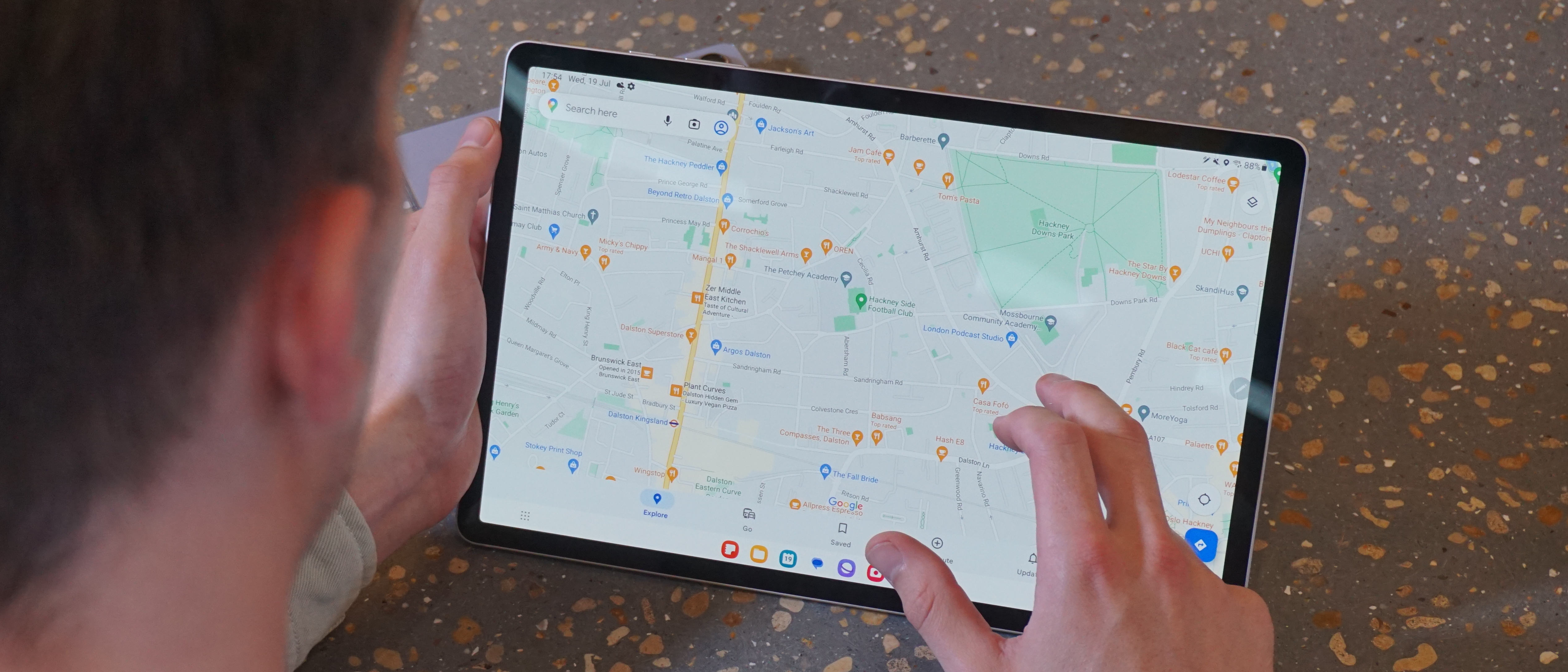Early Verdict
The Samsung Galaxy Tab S9 and Tab S9 Plus offer better screens, faster processors and more RAM options than their predecessors, but these upgrades come hand-in-hand with a host of unwelcome price increases. That said, the long-awaited addition of an IP68 water resistance rating on both tablets could be enough to justify the extra expense.
Pros
- +
Stunning displays
- +
IP68 water resistance rating
- +
S Pen stylus included
Cons
- -
Extremely expensive
- -
Mostly run-of-the-mill hardware upgrades
Why you can trust TechRadar
Samsung Galaxy Tab S9 and Tab S9 Plus: Two-minute preview
Samsung unveiled the Samsung Galaxy Tab S9 series at Samsung Unpacked 2023, with the standard Tab S9 and S9 Plus arriving alongside the Tab S9 Ultra (head over to our Samsung Galaxy Tab S9 Ultra review for an early look at that device, as well as our Samsung Galaxy Tab S9 deals page for the best offers live now).
We’ve already seen both the Tab S9 and S9 Plus in person, but we haven’t spent enough time with either tablet to come to a full verdict on their pros and cons just yet. Mind you, the upgrades on offer here are clear: for the Tab S9, you’re getting a brighter screen, a faster processor, a slightly bigger battery, more RAM options and an IP68 water resistance rating.
For the larger Plus model, the improvements are mostly the same, though instead of a battery size increase and display upgrade, Samsung has included a beefier ultra-wide sensor on the rear of the tablet. The Tab S9 Plus is available in 512GB storage options, too.
That all sounds great, right? Sure. But Samsung being Samsung, these upgrades come at an exceptionally high cost – and depending on the model you’re after, the company’s across-the-board price increases aren't necessarily justified.
Regardless, both the Samsung Galaxy Tab S9 and S9 Plus are destined to rank among the best Android tablets money can buy in 2023, and we’re looking forward to putting both devices through their paces soon for our full reviews.
More from Samsung Unpacked 2023
Samsung also unveiled new foldable phones at its latest Unpacked event, and you can read our hands-on Samsung Galaxy Z Fold 5 review and hands-on Samsung Galaxy Z Flip 5 review – as well as our Samsung Z Fold 5 and Flip 5 pre-orders guide – elsewhere on TechRadar.
Additionally, the company debuted two new wearables in Korea, so head over to our hands-on Samsung Galaxy Watch 6 review and early Samsung Watch 6 Classic review for our initial impressions of both devices.
Samsung Galaxy Tab S9 and Tab S9 Plus: Price and availability
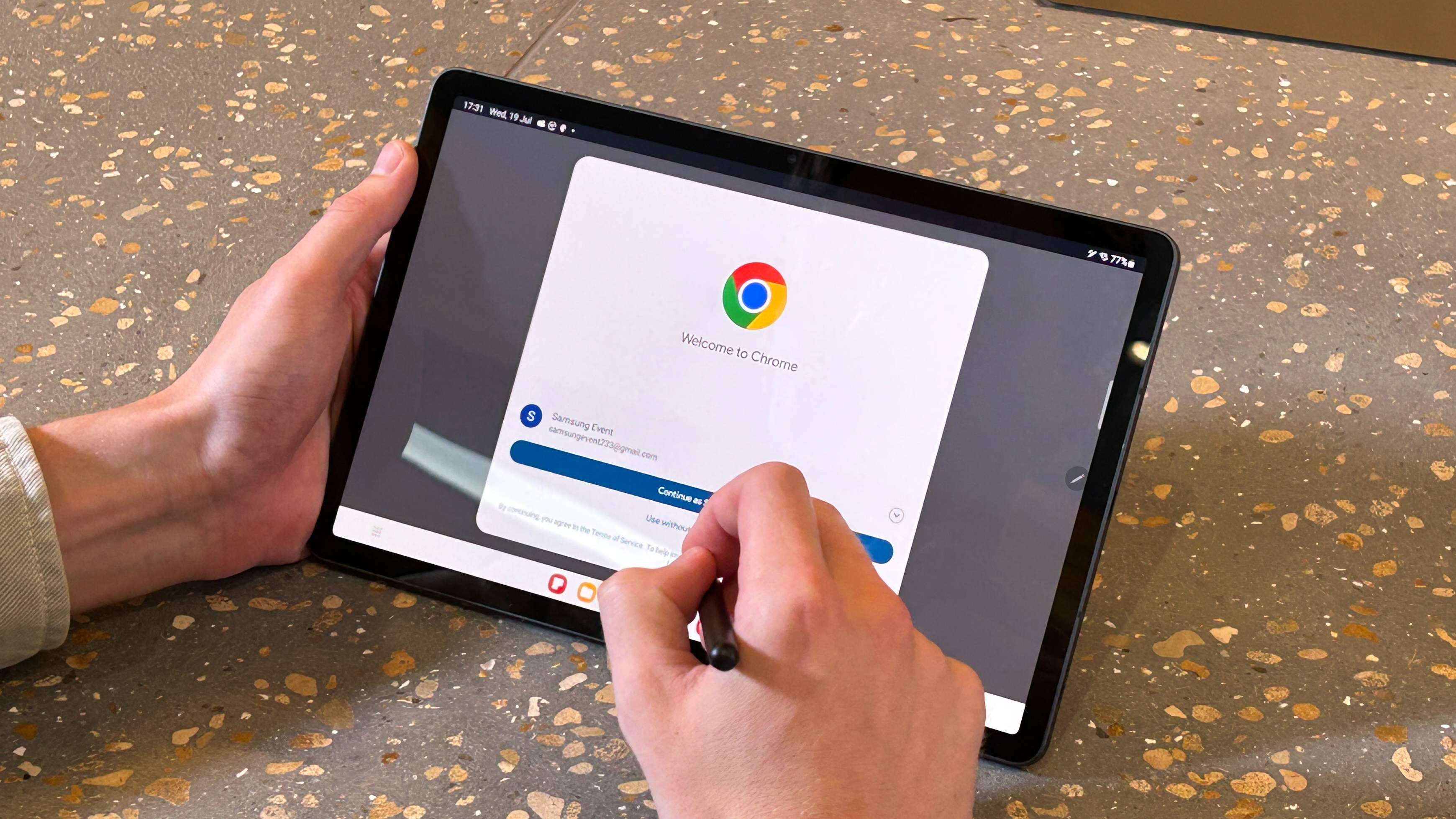
As mentioned, Samsung debuted the Galaxy Tab S9 and S9 Plus at Samsung Unpacked on July 26, 2023, with both models becoming available to pre-order on that date.
The tablets begin shipping in the UK, US and Australia on August 11, and anyone who pre-orders the Galaxy Tab S9 and S9 Plus ahead of time from Samsung directly will get a slim book cover keyboard and 12 months of Disney Plus thrown in for free.
As with the Galaxy Tab S8 range, both slates ship in two RAM/storage configurations and with either Wi-Fi or 5G connectivity, but the options aren’t like-for-like versus their respective predecessors. This time around, both tablets are available with up to 12GB RAM – the S9 Plus is offered with 12GB RAM exclusively – and the S9 Plus also gets a larger 512GB storage configuration.
| Header Cell - Column 0 | US | UK | Australia |
|---|---|---|---|
| 8GB / 128GB (Wi-Fi): | $799.99 | £799 | AU$1,299 |
| 8GB / 128GB (5G): | N/A | £949 | AU$1,549 |
| 12GB / 256GB (Wi-Fi): | $919.99 | £899 | AU$1,499 |
| 12GB / 256GB (5G): | N/A | £1,049 | AU$1,749 |
| Header Cell - Column 0 | US | UK | Australia |
|---|---|---|---|
| 12GB / 256GB (Wi-Fi): | $999.99 | £999 | AU$1,699 |
| 12GB / 256GB (5G): | $1,149.99 | £1,149 | AU$1,949 |
| 12GB / 512GB (Wi-Fi): | $1199.99 | £1,099 | AU$1,899 |
| 12GB / 512GB (5G): | N/A | £1,249 | AU$2,149 |
It's a little hard to directly compare these prices with those of the Tab S8 range, given the different RAM/storage configurations and discrepancies in regional pricing, but the fact remains that both the Tab S9 and S9 Plus are more expensive than the Tab S8 and S8 Plus.
If we take the tablets’ UK pricing, for example, the 8GB RAM / 128GB storage models of the Tab S9 cost £150 more than their Tab S8 equivalents, while the 12GB RAM / 256GB storage models cost a whopping £200 – yes, £200! – more than their 256GB last-gen counterparts (though you do get more RAM this time around).
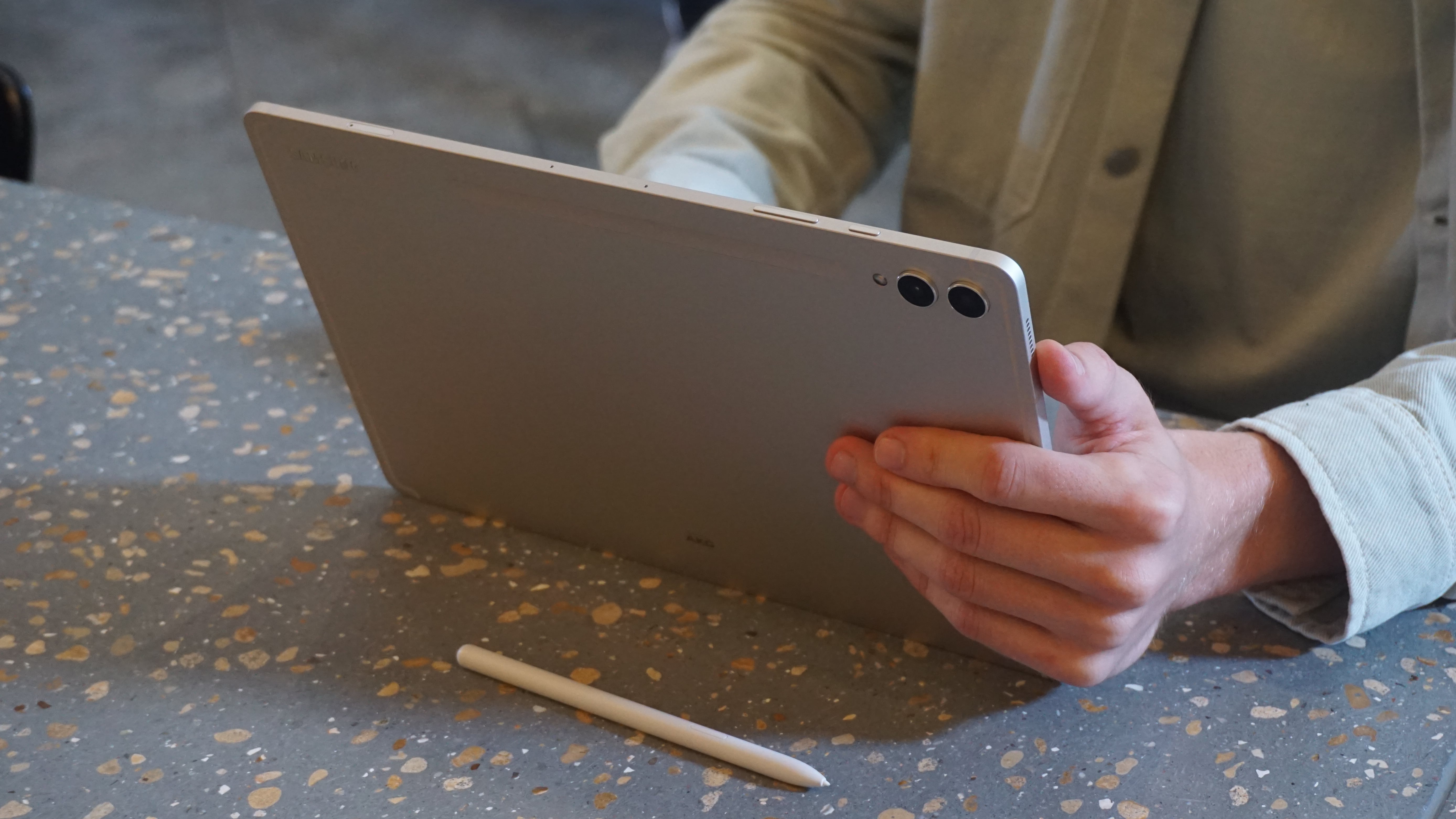
The news isn’t quite so bad for the Tab S9 Plus. The 12GB RAM / 256GB storage models cost £100 more than their nearest Tab S8 Plus equivalents, but again, you get more RAM from the S9 Plus. The Tab S8 Plus wasn’t available in a 12GB / 512GB configuration.
Samsung Galaxy Tab S9 and Tab S9 Plus: Specs
Check out the full specs for the Samsung Galaxy Tab S9 and Tab S9 Plus below:
| Samsung Galaxy Tab S9 | Samsung Galaxy Tab S9 Plus | |
|---|---|---|
| Dimensions: | 165.8 x 254.3 x 5.9mm | 185.4 x 285.4 x 5.7mm |
| Weight: | 498g (Wi-Fi), 500g (5G) | 581g (Wi-Fi), 586g (5G) |
| OS: | Android 13 | Android 13 |
| Display: | 11-inch Dynamic AMOLED 2X | 12.4-inch Dynamic AMOLED 2X |
| Refresh rate: | 120Hz | 120Hz |
| CPU: | Snapdragon 8 Gen 2 for Galaxy | Snapdragon 8 Gen 2 for Galaxy |
| RAM: | 8GB, 12GB | 12GB |
| Storage: | 128GB, 256GB | 256GB, 512GB |
| Battery: | 8,400mAh | 10,090mAh |
| Rear cameras: | 13MP main | 13MP main, 8MP ultra-wide |
| Front camera: | 12MP ultra-wide | 12MP ultra-wide |
Samsung Galaxy Tab S9 and Tab S9 Plus: Design
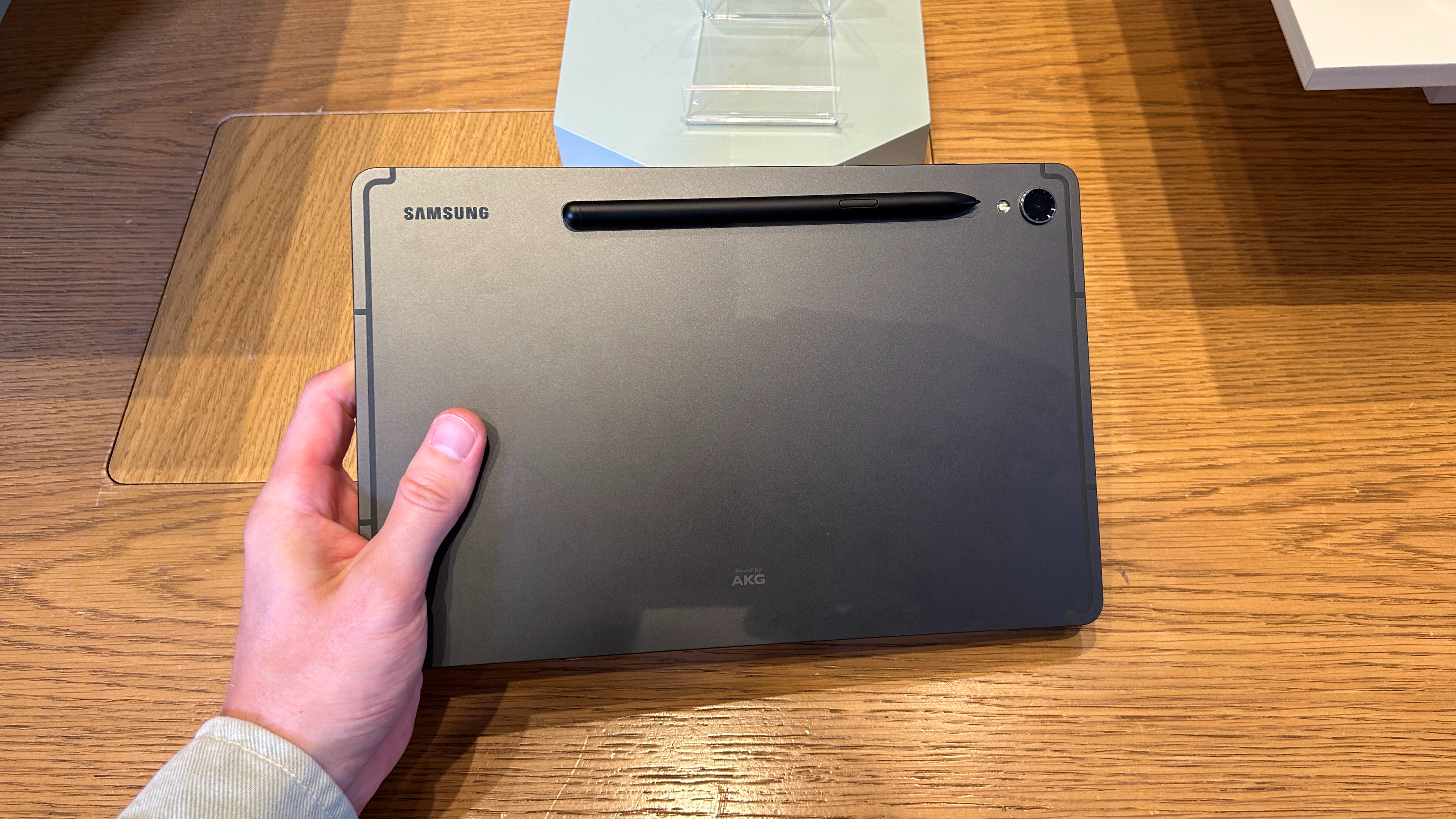
On the design front, Samsung hasn’t messed with a winning formula; both the Tab S9 and Tab S9 Plus look nearly identical to their respective predecessors.
These slates boast sharp, all-aluminum bodies, practical button arrangements and minimal display bezels, and both feel comfortable to hold in the hand. The smart-looking magnetic silo for the included S Pen stylus returns for this generation, too, which again doubles as a charger on both models.
The Tab S9 measures 165.8 x 254.3 x 5.9mm – which is slightly thinner than the Tab S8 – and weighs 498g (Wi-Fi) / 500g (5G), while the Tab S9 Plus measures 185.4 x 285.4 x 5.7mm and weighs 581g (Wi-Fi) / 586g (5G). Both are available in either graphite or beige.
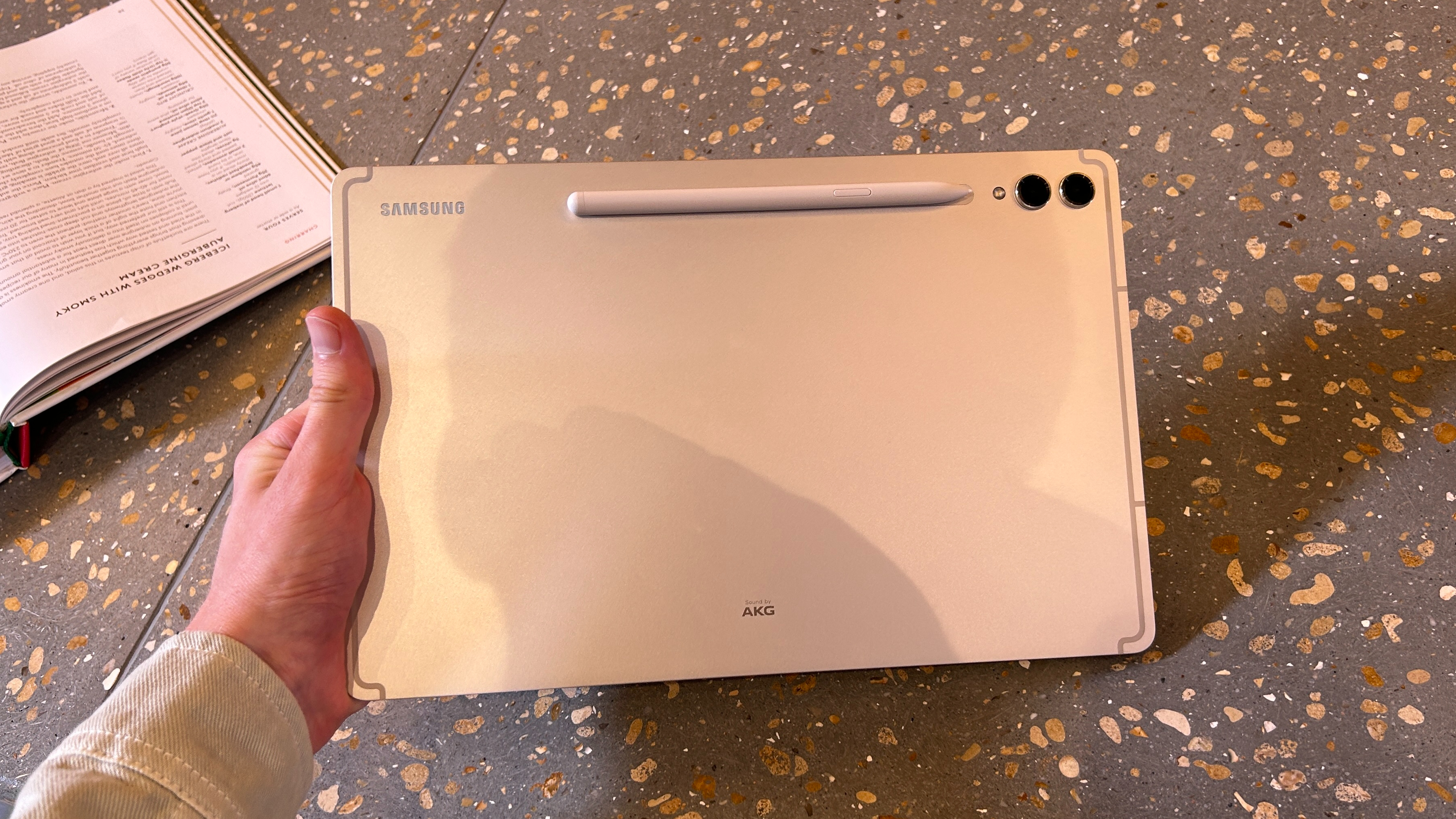
The only real aesthetic difference between these tablets and their predecessors is the rear camera arrangement on both models, which now more closely resembles the sensor setup on the Samsung Galaxy S23 line of phones; it's a change we’re happy to see implemented.
The biggest design upgrade comes in the form of an IP68 dust and water resistance rating – the first of its kind for a premium tablet. Even the best iPads risk getting fried by water if you use them in the bathtub or too close to the pool, but Samsung claims that the Tab S9 and S9 Plus can survive being submerged in up to 1.5m of water for up to 30 minutes.
Obviously, we haven’t been able to test that claim for ourselves yet, but, at least on paper, Samsung’s latest tablets boast durability credentials that no other premium tablet can match right now.
Samsung Galaxy Tab S9 and Tab S9 Plus: Display
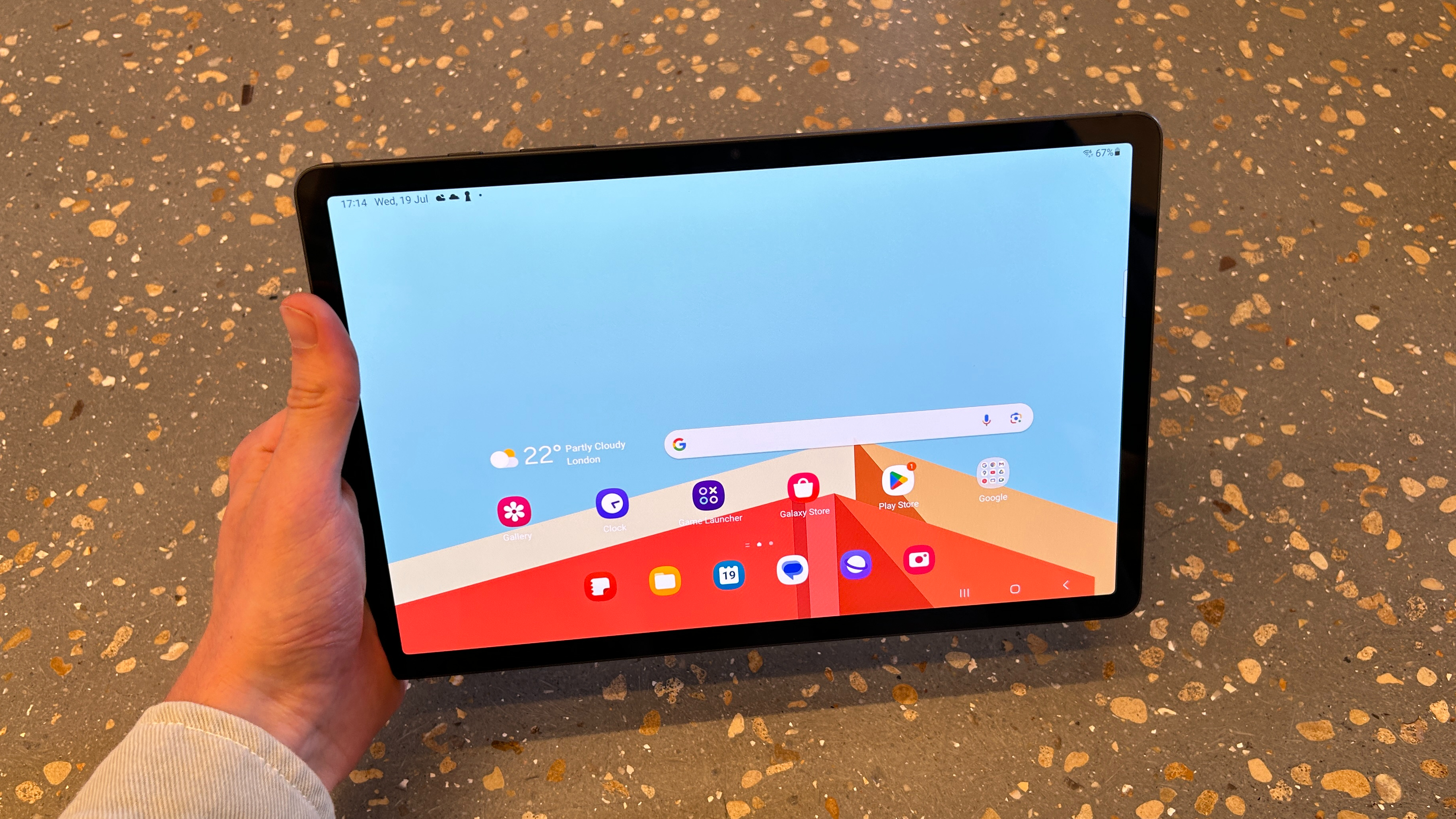
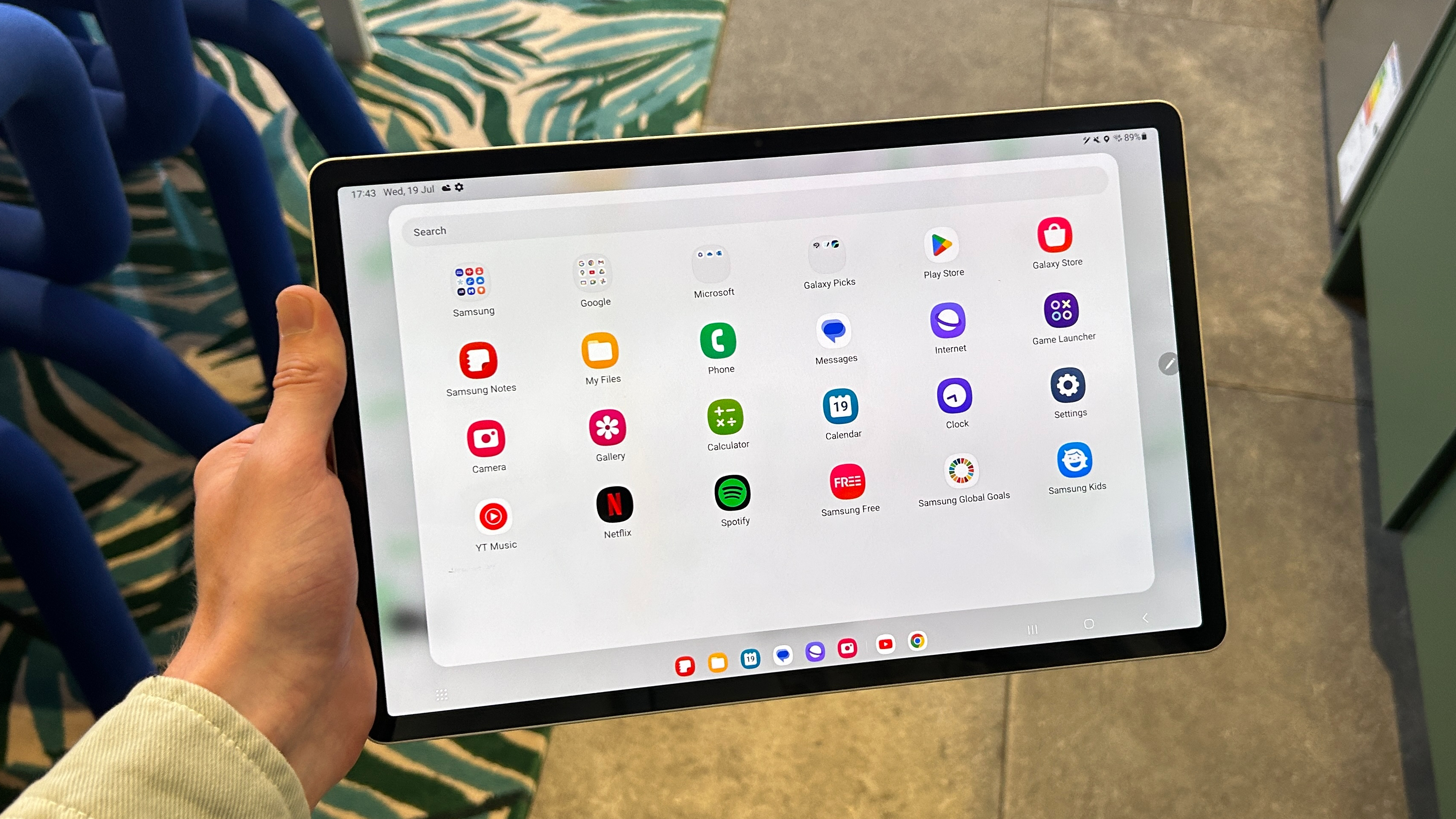
Samsung has swapped the Galaxy Tab S8's LTPS LCD screen for a Dynamic AMOLED display on the Tab S9, bringing it in line with the Tab S8 Plus and Tab S8 Ultra (whose respective successors get AMOLED displays again). The result is a brighter, more vibrant and generally more premium-feeling visual experience on Samsung's latest entry-level tablet.
The screen sizes are the same – 11 inches for the standard Tab S9, 12.4 inches for the S9 Plus – and the up-to-120Hz dynamic refresh rate returns, too, so scrolling on either tablet remains as smooth as you’d expect from devices in this price range.
Samsung has also endowed both tablets with its new Vision Booster technology, which it says will improve outdoor visibility. We haven’t had a chance to compare the S9 and S8 series on that front just yet, but we’ll be running side-by-side tests for our full reviews.
Samsung Galaxy Tab S9 and Tab S9 Plus: Cameras
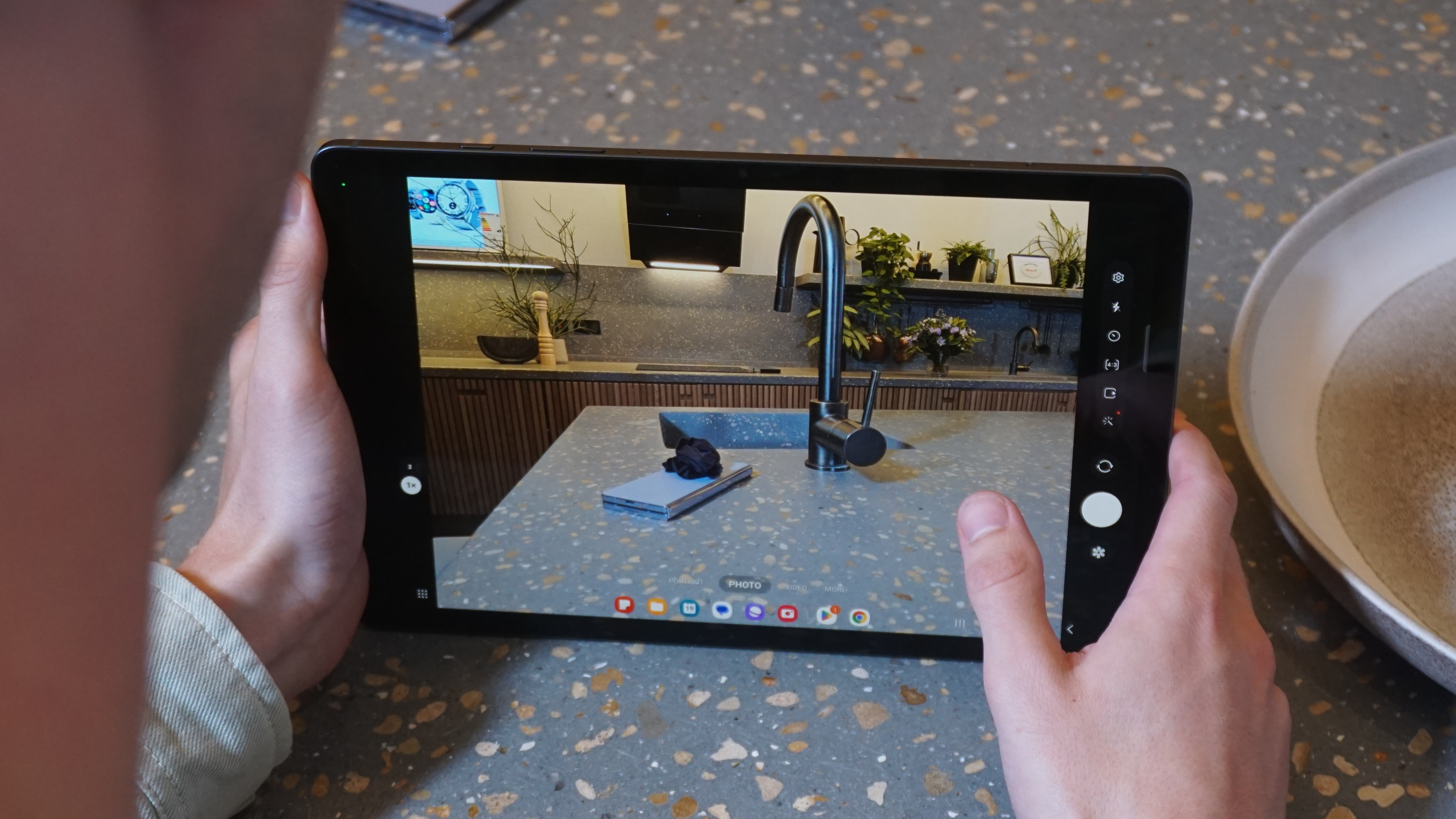
Premium tablets have never been marketed towards photography aficionados, and Samsung clearly doesn’t intend to change that with the Galaxy Tab S9 and S9 Plus.
Both slates sport 13MP main snappers on the back, with the Plus also benefiting from an 8MP ultra-wide sensor (which marks an improvement over the S8 Plus’ 6MP equivalent). Obviously, these cameras can’t compete with the best camera phones in the detail department – or even the best cheap phones, for that matter – but that’s not to say they’re incapable of taking solid photos.
If you’re someone who needs to take photos in education or work environments, or who likes to use your tablet to snap the occasional family photo or pretty picture of the garden, the 13MP camera on both the Tab S9 and S9 Plus will perform just fine. You’ll get more versatility from the S9 Plus, what with it having an 8MP ultra-wide sensor, but neither model offers the level of composition options you’d expect to find on a high-end smartphone (heck, even the mega-expensive Galaxy Tab S9 Ultra uses the same camera setup as the S9 Plus).
Both the Tab S9 and S9 Plus stick with their predecessors’ 12MP ultra-wide front-facing camera, which is more than suitable for video calls and the like.
Samsung Galaxy Tab S9 and Tab S9 Plus: Performance

One of the more significant upgrades to this year’s Galaxy Tab devices comes under the hood. On top of more RAM options, all three models in the lineup pack Qualcomm’s Snapdragon Galaxy 8 Gen 2 for Galaxy – the same bespoke chipset you’ll find in Samsung’s excellent Galaxy S23 phones.
Neither the S8 nor S8 Plus are sluggish tablets, by any means, but Qualcomm’s latest and greatest processor has proven itself a supremely capable power source in many of the best Android phones this year, and it’s good to see Samsung showing its new tablet range the same love.
We’ll be running benchmark tests for our full reviews of the Tab S9 and Tab S9 Plus, but we can confidently say that smooth scrolling, seamless multitasking and stellar gaming performance are all guaranteed here – you’ll be hard-pressed to find faster tablets anywhere else.
The movie-watching experience is similarly impressive on both models. Four Dolby Atmos-enabled speakers accompany those aforementioned Dynamic AMOLED displays, so you’ll have no trouble hearing video content if you’re brave enough to stream whatever you’re watching out loud.
Samsung Galaxy Tab S9 and Tab S9 Plus: Software

The software experience on both the Galaxy Tab S9 and S9 Plus is a familiar one. Every device in Samsung’s new lineup runs Android 13 with the company's OneUI laid over the top, so those who are familiar with the latter operating system won’t find anything out of the ordinary here.
These being Samsung tablets, you also get DeX mode – which lets you mimic the desktop experience by linking a keyboard and monitor – easy-to-use split-screen functionality, and MultiControl, Samsung’s multi-device multitasking software.
GoodNotes – the most popular note-taking app on iOS, according to Samsung – makes its Android debut with the Galaxy Tab S9 series, too, and all three tablets come equipped with integration for creative apps including LumaFusion, Clip Studio Paint and ArcSite.
Samsung Galaxy Tab S9 and Tab S9 Plus: Battery life
The Galaxy Tab S9 and S9 Plus sport 8,400mAh and 10,090mAh batteries, respectively. The former is a touch larger than its predecessor’s 8,000mAh battery, while the latter is identical to the power pack used in the Tab S8 Plus.
We haven’t been able to properly test the battery life of either model just yet, but given that we got around eight hours of video playback from a single charge on the Tab S8, you can expect the same or better performance from the Tab S9.
In our testing of the Tab S8 Plus, we managed a full day of moderate use on a single charge, so it follows that the Tab S9 Plus will deliver similar battery life performance. Fast charging (up to 45W) returns for both models, too.
First tested July 2023

Axel is TechRadar's UK-based Phones Editor, reporting on everything from the latest Apple developments to newest AI breakthroughs as part of the site's Mobile Computing vertical. Having previously written for publications including Esquire and FourFourTwo, Axel is well-versed in the applications of technology beyond the desktop, and his coverage extends from general reporting and analysis to in-depth interviews and opinion. Axel studied for a degree in English Literature at the University of Warwick before joining TechRadar in 2020, where he then earned an NCTJ qualification as part of the company’s inaugural digital training scheme.
What is a hands on review?
Hands on reviews' are a journalist's first impressions of a piece of kit based on spending some time with it. It may be just a few moments, or a few hours. The important thing is we have been able to play with it ourselves and can give you some sense of what it's like to use, even if it's only an embryonic view. For more information, see TechRadar's Reviews Guarantee.
